When it comes to transforming your home into a cozy, stylish haven, lighting plays a starring role. Interior designers know that the right lighting can completely elevate a space—whether it’s creating ambiance, highlighting architectural details, or simply making a room feel more welcoming. And with the advent of smart lighting, the possibilities have become endless. These clever, tech-savvy tricks will help you harness the full power of lighting in your home. If you’re ready to take your home decor to the next level, here are five smart lighting tricks that interior designers swear by.

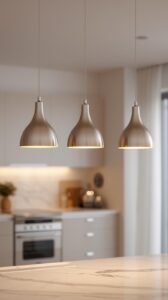
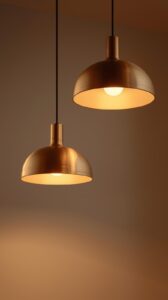
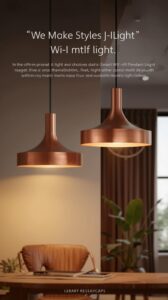
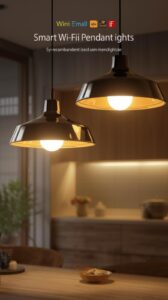
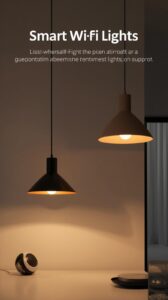
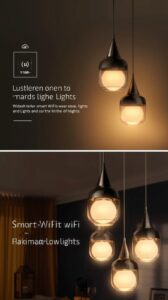
1. Use Layered Lighting to Create Depth and Warmth
One of the first rules of lighting that interior designers emphasize is the importance of layered lighting. This technique involves using multiple light sources at different levels to create a warm, inviting atmosphere. Instead of relying on one overhead light, combine ambient, task, and accent lighting throughout the room.
For instance, in your living room, you can have a ceiling light (ambient), task lighting for reading (like a floor or table lamp), and accent lights that highlight artwork or architectural features. The beauty of smart lighting is that you can control each layer independently through your phone or voice command. Want to dim the overhead lights but brighten your reading nook? No problem. With smart bulbs and smart pendant lights, adjusting your lighting to create the perfect mood has never been easier.
This layering technique also makes small spaces feel larger and more dynamic. By strategically placing your lights, you can visually expand your space and add depth, making your home feel more luxurious and less flat. It’s an easy, yet powerful way to transform your home without making drastic changes.
2. Highlight Architectural Features with Smart Lighting
Smart lighting is an amazing tool when it comes to highlighting architectural features in your home. Whether it’s an eye-catching wall, beautiful molding, or an intricate ceiling design, lighting can help bring these elements to life.
Interior designers often recommend installing smart accent lights along the walls, under cabinets, or even around doorways to draw attention to unique features. Smart lights, like LED strips, can be programmed to change colors or brightness, allowing you to switch up the mood depending on the occasion. These lights can subtly highlight your home’s design, making it feel like you live in a magazine-worthy space.
For example, if you have a gorgeous archway or a stunning feature wall, placing smart spotlights above or below it will cast a soft, inviting glow. You can even adjust the light’s color to match the mood or season, making it a versatile way to bring your home’s design to life at any time of the year.
3. Set the Mood with Color-Changing Lights
One of the smartest tricks interior designers swear by is the use of color-changing lights to set different moods throughout the day. Lighting can completely shift the vibe of a room, and with smart lights, you can effortlessly switch from one color to another, giving your space a completely new feel.
During the day, you might want bright, natural white lighting that mimics daylight to energize and focus. In the evening, you can opt for warmer, softer tones to create a cozy and relaxing ambiance. Or if you’re hosting a party, color-changing lights allow you to switch to fun, vibrant hues that enhance the atmosphere.
With smart lighting apps, you can set different “moods” based on your preferences. For example, set a romantic soft pink hue for date night or a calming blue for relaxation. Some smart lighting systems even let you sync the colors to your music, creating a sensory experience that’s both visually and emotionally engaging. It’s all about having the freedom to change your space at the touch of a button!
4. Use Dimmable Smart Lights for Ultimate Control
One of the most powerful aspects of smart lighting is the ability to dim your lights to create the perfect atmosphere. Dimmable lights give you complete control over the intensity of the lighting, which is crucial for setting the right mood.
Interior designers often use dimmable lights in living rooms, bedrooms, and dining areas to create a flexible ambiance that can easily transition throughout the day. You might want bright, focused light during the morning to wake up and energize, but in the evening, a soft, dim light can turn your space into a cozy retreat. Dimmable lights also help prevent eye strain, making them ideal for spaces where you spend long periods of time, such as your home office or reading nook.
With smart dimmers, you can adjust the lighting via your phone, smart speaker, or remote control. No more fiddling with switches or getting up to adjust the light. It’s all about convenience and personalization, allowing you to enjoy your space the way you like it, whenever you like it.
5. Use Motion-Sensing Lights for Convenience and Safety
Another smart lighting trick that’s gaining popularity among interior designers is the use of motion-sensing lights. These lights automatically turn on when they detect movement, making them both a practical and energy-efficient solution for your home.
Motion sensors can be installed in hallways, bathrooms, and even closets, so you never have to fumble for a light switch when you enter a room. In addition to being convenient, motion-sensing lights are also a great way to enhance safety in your home, especially in darker areas like stairs or entryways. The light automatically turns on as you approach, ensuring that you never have to worry about tripping or stumbling in the dark.
And the best part? Since these lights are typically LED-based, they consume very little energy, so you can enjoy the convenience without worrying about high electricity bills. They can even be connected to your smart home system, allowing you to customize when and where they turn on and off.
6. Create Ambient Lighting with Smart LED Strips
One of the easiest ways to add instant mood lighting to any room is by using smart LED strips. These versatile strips can be placed in various locations to provide ambient lighting that enhances the overall atmosphere of your space. Interior designers love using LED strips for their flexibility, energy efficiency, and ease of installation.
You can install LED strips behind furniture, under cabinets, or along baseboards to create a soft, diffused light that fills the room with a warm glow. In kitchens, under-cabinet LED strips provide functional lighting for cooking while adding a modern touch. In living rooms or bedrooms, placing them behind your TV or along a shelf can create a cozy, ambient light perfect for movie nights or winding down before bed.
The beauty of smart LED strips is that you can control them via your phone or voice commands, adjusting the brightness or color temperature to fit your mood. Whether you want a soft white light for a calm atmosphere or vibrant colors for a fun, energetic vibe, smart LED strips are the perfect solution.
7. Use Smart Pendant Lights for a Modern, Elegant Touch
Pendant lights have long been a favorite among interior designers for their ability to add both style and functionality to a space. In small spaces or over tables, smart pendant lights can create a stunning focal point while offering adjustable lighting options that are perfect for any occasion.
Smart pendant lights, with their sleek designs, are ideal for kitchens, dining rooms, and even bathrooms. With the ability to control the brightness and color via your smartphone or voice, you can easily switch from bright, task-oriented light to soft, ambient lighting with just a tap. Imagine being able to adjust the light’s warmth during a romantic dinner or increase the brightness when you’re working on a project.
Additionally, the elegance of pendant lights works wonders in minimalist settings. Their simple yet striking design can complement any decor style, from modern to industrial, making them a go-to choice for interior designers when looking to add sophistication to a room without overwhelming the space.
8. Automate Your Lighting with Smart Timers and Schedules
One of the smartest features of smart lighting is the ability to automate your lights through timers and schedules. Interior designers often use this feature to make sure the lighting is always perfectly aligned with your daily routines and activities.
For instance, you can set your lights to gradually brighten in the morning to simulate a natural sunrise, helping you wake up gently. Similarly, you can schedule your lights to dim in the evening, signaling that it’s time to unwind and relax. This can be especially helpful in areas like the living room or bedroom, where you can program the lights to transition from bright to soft as you move from one activity to the next.
Smart timers can also be used to create the illusion that someone is home, even when you’re away. By setting your lights to turn on and off at different intervals, you can enhance security and give your home a lived-in feel.
9. Illuminate Your Outdoor Spaces with Smart Lighting
The power of smart lighting extends beyond your indoor spaces. Outdoor smart lighting is an amazing way to add ambiance and security to your outdoor areas, like patios, gardens, and pathways. Designers use smart outdoor lights to create inviting, well-lit spaces where you can relax, entertain, and enjoy nature, even after the sun goes down.
Smart outdoor lights come in a variety of styles, from wall-mounted sconces to path lights, floodlights, and even string lights. With Wi-Fi connectivity, you can control these lights from anywhere, ensuring that your outdoor spaces are always perfectly lit. Whether you’re hosting a gathering or simply enjoying a quiet evening outdoors, smart lighting can provide the perfect amount of light with the convenience of app control.
Furthermore, many smart outdoor lights are equipped with motion sensors, adding an extra layer of security to your home. They automatically turn on when they detect movement, making it easier to navigate your yard at night or alerting you to any unwanted visitors.
10. Use Smart Lighting to Boost Productivity in Your Home Office
As more people work from home, creating a productive and comfortable home office has become a top priority. Smart lighting can play a crucial role in making your workspace both functional and conducive to focus and creativity.
Interior designers suggest using bright, cool-toned lighting during work hours to enhance alertness and concentration. Smart desk lamps and overhead lights that offer adjustable brightness and color temperature are perfect for creating an environment that boosts productivity. With a simple voice command or app setting, you can change the lighting based on the task at hand—whether it’s a brainstorming session, reading, or detailed work that requires extra focus.
In the evening, you can adjust the lighting to warmer tones to create a more relaxing, calming atmosphere when it’s time to unwind. The ability to customize your lighting throughout the day helps you maintain a balance between focus and relaxation, which is essential for a healthy work-life routine.
Final Thoughts on Smart Lighting for Your Home
As we’ve seen in these past two parts, the possibilities with smart lighting are endless. Whether you’re looking to create a cozy ambiance, highlight architectural features, or enhance your productivity, smart lighting gives you complete control over the atmosphere in your home. With features like dimming, color-changing, automation, and remote control, these lighting systems are not only convenient but also adaptable to your lifestyle.
Interior designers swear by these tricks because they offer the perfect balance of style and function. The beauty of smart lighting is that it doesn’t just enhance the aesthetics of a space; it also makes your home smarter, more energy-efficient, and easier to navigate.
So, if you’re ready to take your home to the next level, consider incorporating these smart lighting tricks. Your space will not only look more polished but also feel more comfortable, functional, and personalized to your needs.
